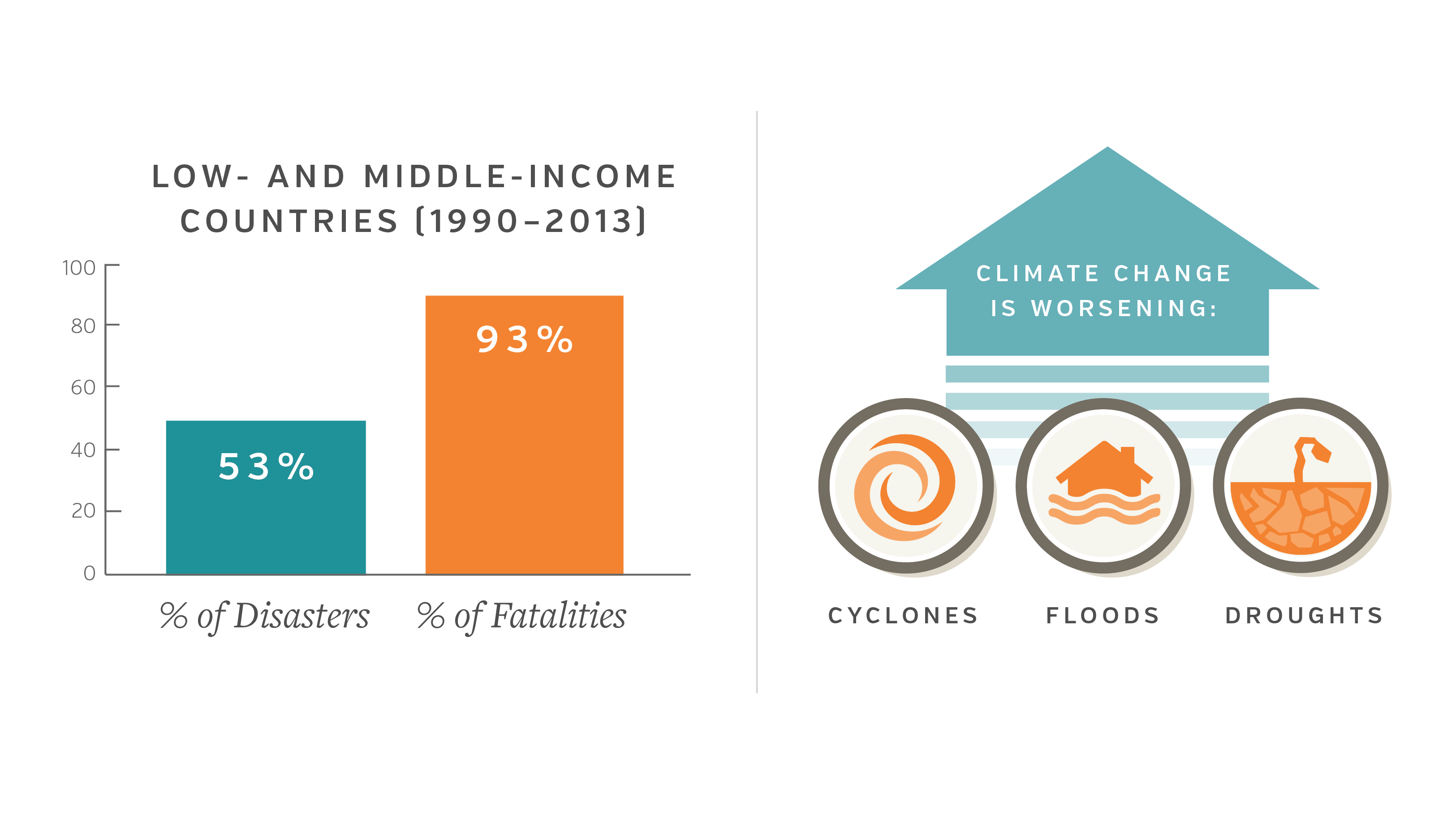A year ago in April 2015, a 7.8 magnitude earthquake in Nepal killed nearly 9,000 people and demolished thousands of schools, homes, hospitals, and historical landmarks. Countless other seismic and climate-related catastrophes have brought $4.2 trillion in losses over the last few decades. To help curb losses like these, the World Bank Group and the Global Facility for Disaster Risk Reduction (GFDRR) are unveiling an unprecedented global partnership aimed at strengthening building regulation for disaster resilience in vulnerable countries.
Surging Urban Populations, Ineffective Building Regulation
Nearly 1.4 million people are moving into urban areas every week, and the need for effective building codes and land use planning is growing in step. Nairobi’s population, for example, has grown from 350,000 in the 1960s to 3.1 million today. The city has experienced numerous collapses and fires over the past 20 years due to inadequate building codes. Moreover, at least 60 percent of this growing population lives in slums, creating even greater implementation challenges.
Unplanned urbanization and lack of effective building regulation are major drivers of natural disasters losses, which have more than quadrupled since 1980. Disasters also disproportionately impact the poor, with low- and middle-income countries suffering nearly 90 percent of all disaster-related fatalities since 1990, despite experiencing less than half of the disasters. Moreover, climate change is threatening to exacerbate these losses through more extreme droughts, cyclones, and floods, and may push 100 million people into poverty by 2030.

